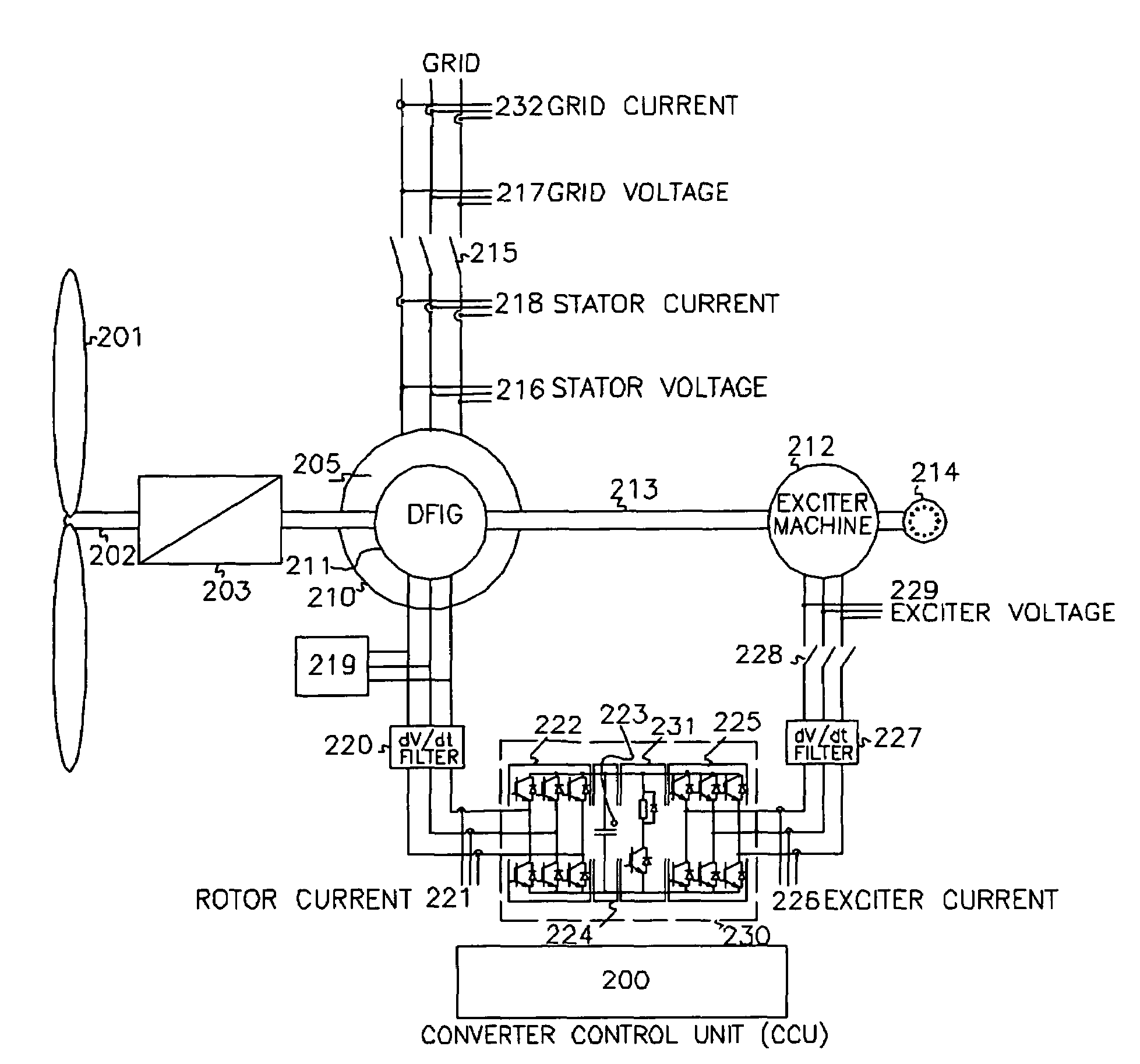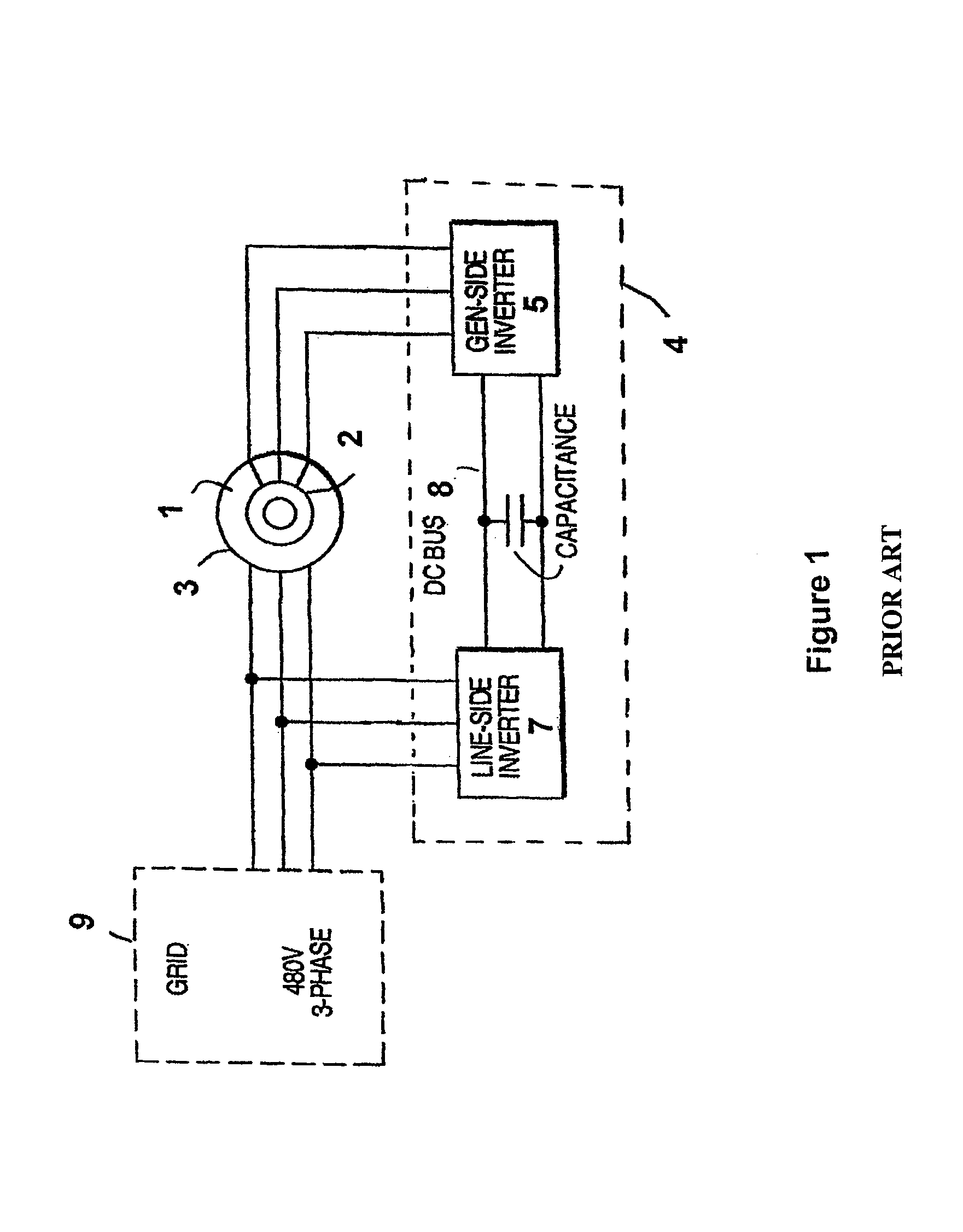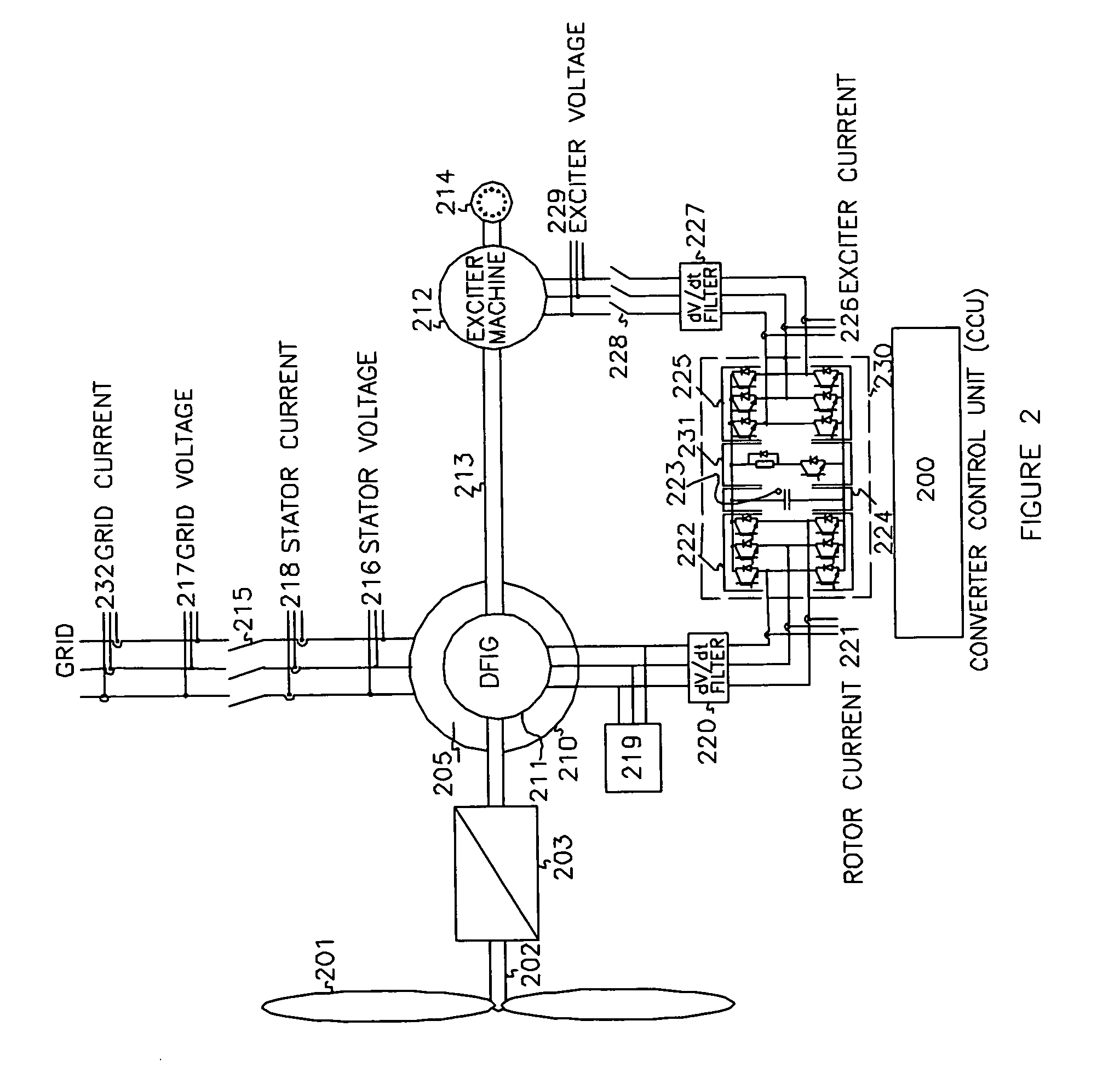Variable speed wind turbine having an exciter machine and a power converter not connected to the grid
a variable speed, wind turbine technology, applied in the direction of variable speed operation control, machine/engine, electric generator control, etc., can solve the problems of wind turbine manufacturers not considering power quality, and affecting the efficiency of wind turbines. , to achieve the effect of avoiding undeired harmonic distortion, better power quality, and convenient us
- Summary
- Abstract
- Description
- Claims
- Application Information
AI Technical Summary
Benefits of technology
Problems solved by technology
Method used
Image
Examples
Embodiment Construction
[0043]A variable speed wind turbine according to various exemplary embodiments is described below. Several drawings will be referenced only as illustration for the better understanding of the description. Furthermore, the same reference numbers will be used along the description referring to the same or like parts.
Overview
[0044]Generally, the variable speed wind turbine generator according to various exemplary embodiments of the present invention channels the electrical power generated by the rotor during super synchronous operation of the doubly fed induction generator, to an exciter machine. The exciter machine then converts this electrical energy back into mechanical rotation energy, which can then be used to further increase the electrical power generated by the stator that is delivered to the grid. Electrical power is only delivered to the grid by the stator of the DFIG avoiding the delivery of power to the grid through power converters. Thus, the quality of the electrical powe...
PUM
 Login to View More
Login to View More Abstract
Description
Claims
Application Information
 Login to View More
Login to View More - R&D
- Intellectual Property
- Life Sciences
- Materials
- Tech Scout
- Unparalleled Data Quality
- Higher Quality Content
- 60% Fewer Hallucinations
Browse by: Latest US Patents, China's latest patents, Technical Efficacy Thesaurus, Application Domain, Technology Topic, Popular Technical Reports.
© 2025 PatSnap. All rights reserved.Legal|Privacy policy|Modern Slavery Act Transparency Statement|Sitemap|About US| Contact US: help@patsnap.com



